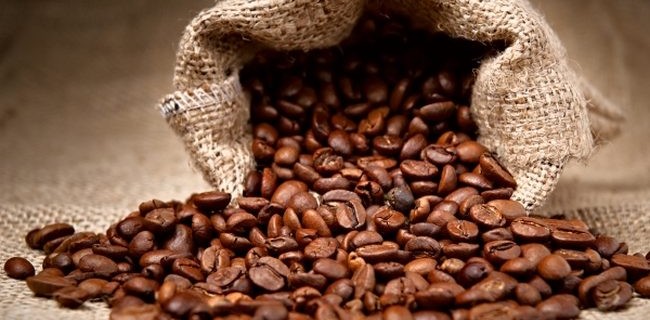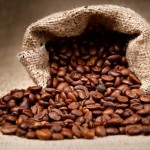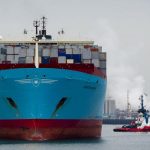Will coffee futures recover in 2018?

Coffee prices fared poorly last year, despite (depending on which analysis you follow) ideas of another world production deficit.
The impact of the shortfall, evident in downbeat export data from Brazil and Vietnam, was muted by the extent to which importing countries had already stockpiled beans.
Forecasts of production recoveries in both countries also undermined values, with robusta futures faring particularly poorly – tumbling 21% – as ideas of strong output in Vietnam, the top producer of the variety, received support from early harvest talk.
Arabica futures fell by a more modest 7.9%, with an anticipated strong harvest in Brazil, the biggest arabica grower, still a few months away.
But with coffee futures now relatively low by historical standards has bearish talk now been priced in? Or will values fall further still?
Leading analysts give their views.
ABN Amro
“The price of robusta was depressed… mainly due to the good harvest in Vietnam.
“Favourable weather conditions (dry and sunny) led to an excellent harvest in the world’s second-largest coffee-producing country and exports rose as well. This pushed down the robusta price.
“The reports from Brazil, the world’s biggest coffee producer, were less positive. Coffee exports there lagged behind expectations.
“The 2017-18 season ending in June is an off-year. This means lower [production], while demand is expected to continue growing.
“Prices will rise as a result, but only to a limited extent as 2018-19 will be an on-year with all the signs pointing to a record harvest in Brazil.”
Cepea
“The favourable climate for the development of the 2018-19 crop in Brazil, and it being an ‘on’ year in the cycle of alternate higher and lower production years, should result in similar or even higher production than the 2016-17 season.
“In this scenario, domestic and external coffee prices may be pressed in 2018.
“Although there are no official estimates of production, the first speculations already indicate that the harvest should be good, being able to surpass the 51.3m bags indicated by Conab for the 2016-17 season [the last ‘on’ year.
“Besides the positive biennial effect, rains since October have been more generous, allowing the setting of cherries and the beginning of filling in some regions.
“For arabica, despite initial concerns with flowering, which were hampered in September by the drier climate, the return of rain in October has favoured crop development.
“In relation to robusta, especially in Espírito Santo, the more favourable climate in the last months of 2017 allowed the recovery of the coffee plantations, which had been damaged by the drought of previous years.”
Citi
“We expect global production to post around 152.5m bags [in 2017-18], down by 1.4m year-on-year driven by Brazil and partly offset by gains in Vietnam and rest of the world.
“The ratio between arabica and robusta should back-up slightly from last year to about 60-40. Demand growth is expected to remain stable at 1.3-1.5% per annum evenly distributed between importers and exporters on average.
“As long as weather co-operates in Brazil, the world could potentially see a pause from the five-year long coffee deficit cycle and with near perfect weather, we could even potentially see global balances lifted to surplus.
“Nevertheless, as we are still expecting a circa 3.6m-bag deficit globally in 2017-18, we still have a neutral-to-bullish outlook for 2018.
“Short-term, early harvest supply is expected to be slow this year in Vietnam and Colombia due to rainfall. Together with the likelihood of money manager short covering, we are expecting to see prices recover through the first quarter of 2018.
“For the full year, we set our 2018 annual price outlook for ICE coffee at 135 cents a pound… expecting stable prices in 2019.
Commerzbank
“There is widespread consensus that the coffee market is likely to slide back into deficit in 2017-18, which should actually have a price-supportive effect.
“That this is not happening is down to the fact that… attention is already turning to the prospects for the next crop in Brazil. In the case of arabica [it] will be a high-yield year in the two-year cycle. Robusta is also expected to recover after two weak years.
“The price is also likely to be influenced by the fact that coffee stocks in the consumer countries, above all in the US and the EU, find themselves at a high level – indeed at an eight-year high according to the International Coffee Organization.
“The weakness of the robusta price could continue for a while as a result of the high Vietnamese crop, while the prospect of a better 2018-19 crop in Brazil is also unlikely to justify any strong price rise for the time being.
“Particularly the weather in Brazil is likely to strongly influence coffee price trends in the coming months, too.
“We forecast an arabica coffee price of 145 cents per pound and a robusta coffee price of $1,900 per tonne in the fourth quarter of 2018.
“We believe that the risk is more on the upside – namely if weak export figures and unfavourable weather reports trigger a shift in sentiment which, supported by reshuffling of positions on the part of short-term-oriented market participants, could cause a price surge.”
Goldman Sachs
“The recovery in production from the 2016-17 drought, which negatively impacted Brazil robusta production, has resulted in a substantial moderation in prices.
“From here, we see prices stable to slightly higher.
“The two main drivers behind our view are: first, stronger global growth in 2018-19, as well as continued rotation towards the consumer in key emerging markets such as China; and secondly, stabilisation of the Brazilian real exchange rate versus the US dollar and energy prices.
“We maintain our forecasts at 135, 140, 140 cents a pound over a 3-month, 6-month and 12-month horizon.”
Rabobank
“Brazil could produce a record 59m bags in 2018-19 -42.4m bags of arabica and 16.6m bag of conillons [robusta].
“These very early figures are based on a potentially record crop in South of Minas and High Mogian, but less-than-perfect in Cerrado and lacklustre in Zona da Mata and Espirito Santo.
“Vietnam is likely to have record output in 2017-18, which we estimate at 28.7m bags. It is also possible for Vietnam to produce an even larger crop in 2018-19, especially given that a potential La Nina could bring early moisture to the Vietnamese highlands.
“However… we do not see much of a global robusta surplus, considering some recovery in the robusta share [of demand].
“But prices in the second half of 2018 may already start to react downward to a potentially record Brazil conillon harvest in 2019-20.”
Societe Generale
“We forecast global production of arabica coffee at 93.6m and 99.8m 60kg bags in 2017-18 and 2018-19, respectively, and robusta coffee at 62.8m and 64.8m 60kg bags, respectively, over the same periods.
“We estimate a robusta coffee deficit of 4.8m 60kg bags and a surplus of 2.6m 60kg bags of arabica coffee in 2017-18.
“We expect the robusta coffee deficit to decline to 3.4m 60kg bags and the surplus in arabica coffee to increase to 6.3m 60kg bags in 2018-19.
“This is the key reason for our bearishness on the arabica over robusta coffee spread in 2018. We are bearish on the arabica over robusta coffee spread moving above 50 cents a pound due to record inventories and the potential for a demand shift from arabica to robusta amid improving robusta coffee supplies.
“If our largest upside price risk (adverse weather in Brazil) prevails, we could see the arabica coffee price moving in the 135-145 cents a pound range.
“Should the largest downside risk (favourable weather in Brazil) prevail, we may see prices move in the 110-120 cents a pound range.”
Source: agrimoney – Will coffee futures recover in 2018?




























